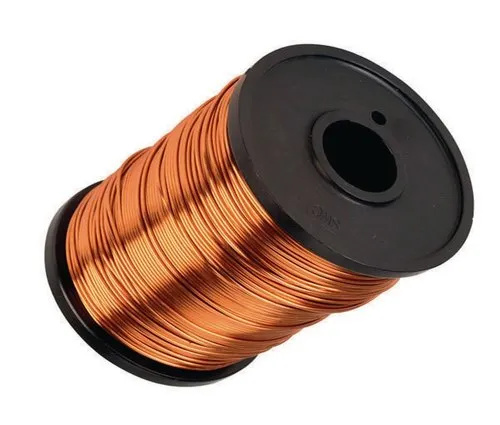How to Properly Size Magnet Wire for Your Application
2024-02-20
Magnet wire plays a crucial role in various electrical applications, from transformers and motors to inductors and solenoids. Choosing the appropriate wire size is essential to ensure optimal performance, efficiency, and safety in your electrical system.
Wire gauge refers to the diameter of the wire. The American Wire Gauge (AWG) system is commonly used to measure wire sizes. The AWG scale assigns a specific number to each wire size, where a higher number indicates a smaller wire diameter. Understanding wire gauge is crucial because it determines the wire's current-carrying capacity and resistance.
Determine Current Requirements:
One of the primary considerations when sizing magnet wire is the amount of current it needs to carry. To determine the current requirements, you should evaluate the electrical load and the operating conditions of your application. Consult the equipment specifications or consult with an electrical engineer to determine the expected current values.
Consider Voltage Drop:
Voltage drop is an important factor to consider, especially when dealing with longer wire lengths. As current flows through a wire, there will be a voltage drop due to the wire's resistance. Excessive voltage drop can result in reduced performance or even damage to your electrical system. Calculate the voltage drop based on the wire resistance and the expected current flow, and ensure it falls within acceptable limits for your application.
Evaluate Temperature Requirements:
Different applications have varying temperature requirements. The temperature rating of magnet wire determines its ability to withstand heat without degradation. It is crucial to choose a wire with an appropriate temperature rating that can handle the operating conditions of your application. Exceeding the temperature limits of the wire can lead to insulation breakdown and potential system failure.
Consider Space Constraints:
The available space within your application can influence the wire size selection. If you have limited space, you may need to choose a wire with a smaller diameter to ensure it fits properly. However, it's important to balance space constraints with the current-carrying capacity and other requirements of your application to avoid overheating or other issues.
Consult Wire Size Charts and Standards:
Several resources are available, including wire size charts and industry standards, that provide recommendations for selecting the appropriate wire gauge based on current ratings, insulation types, and other factors. These resources can serve as a starting point for selecting the right magnet wire for your application. However, it is essential to consider the specific requirements and conditions of your project to make an informed decision.
Seek Professional Assistance:
If you are unsure about the proper wire size for your application or if it involves complex electrical systems, it is always advisable to consult with a qualified electrical engineer or seek professional assistance. They can analyze your requirements, consider all relevant factors, and provide expert guidance to ensure the optimal selection of magnet wire.
Conclusion:
Choosing the right magnet wire size is crucial for the performance, efficiency, and longevity of your electrical application. By understanding wire gauge, determining current requirements, evaluating voltage drop and temperature considerations, and considering space constraints, you can make an informed decision.
